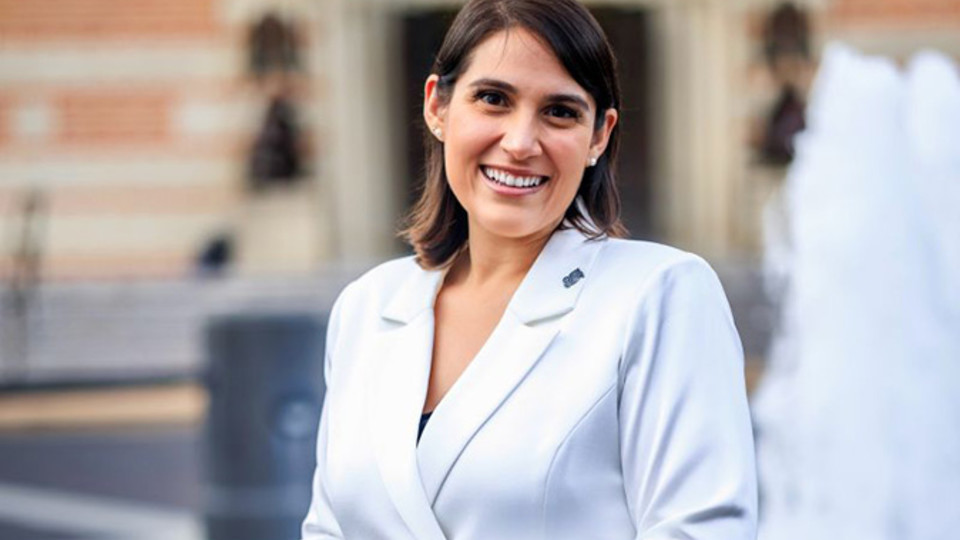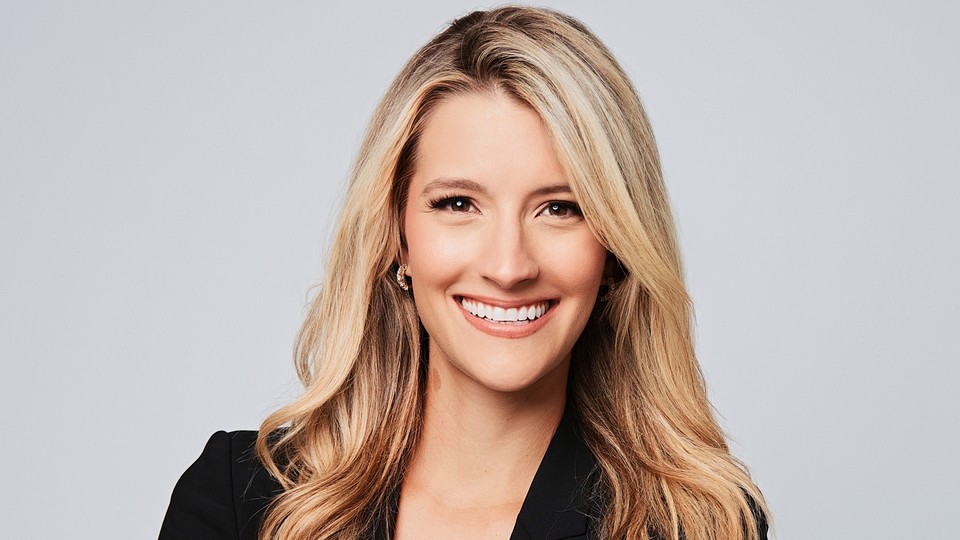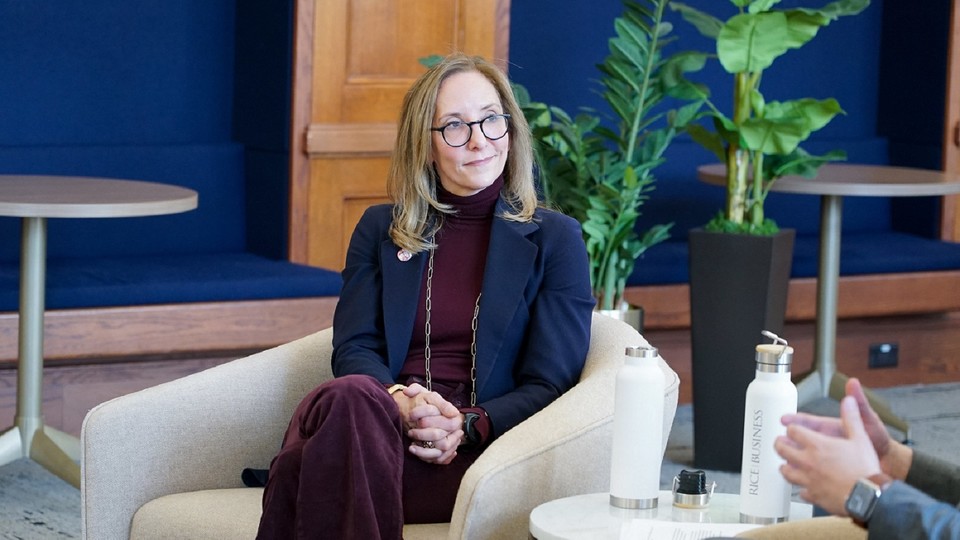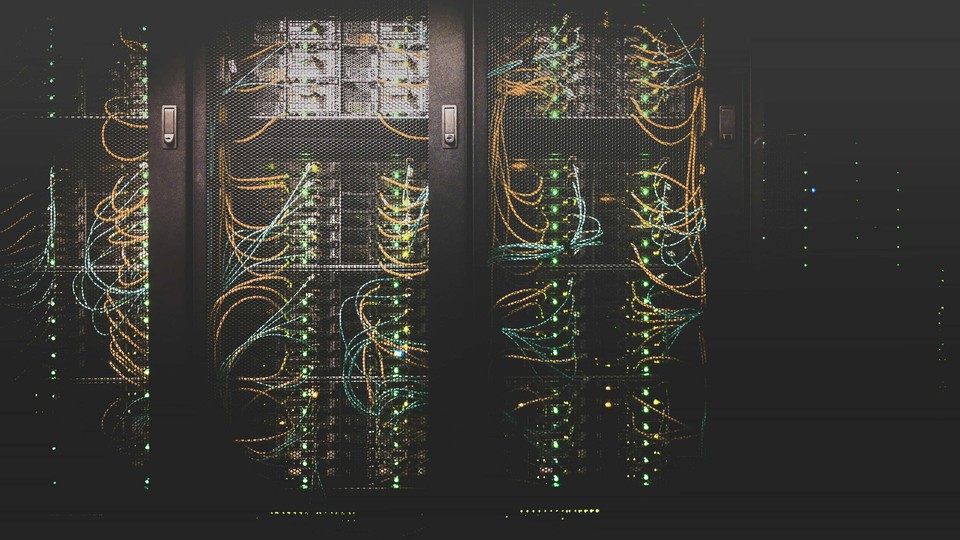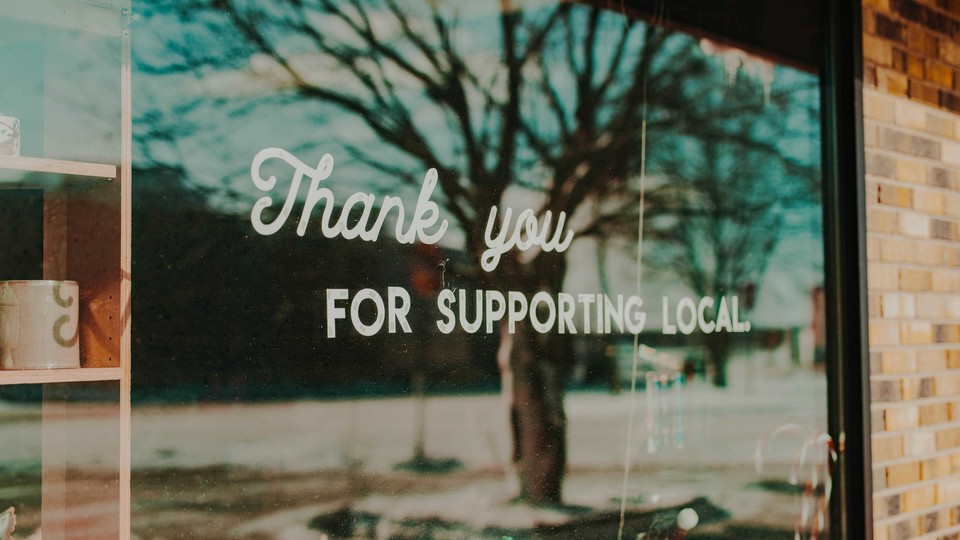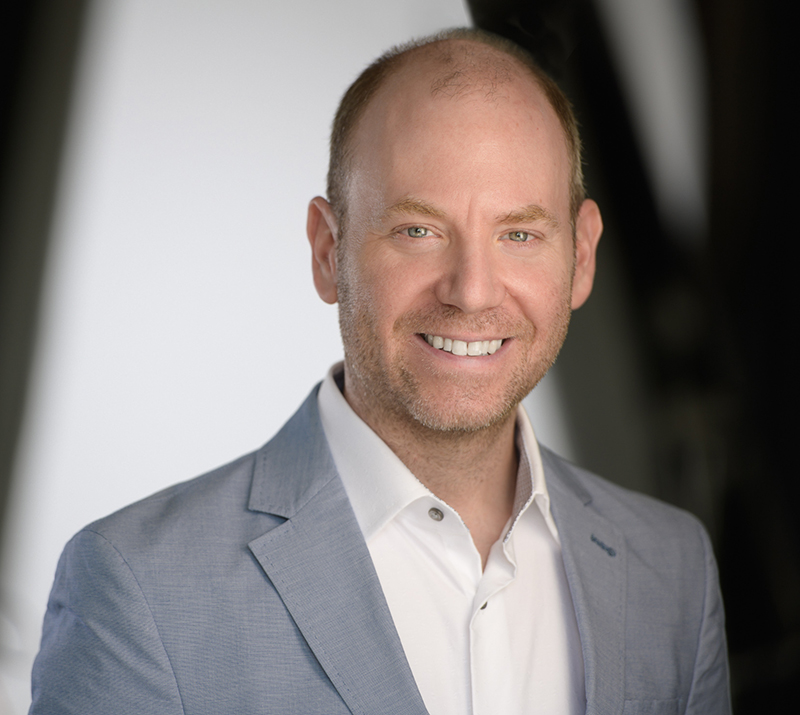
Expert available to discuss Twitter’s leadership
“Leadership starts with a vision that inspires employees and sets expectations,” said Scott Sonenshein, organizational behavior area coordinator and the Henry Gardiner Symonds Professor of Management at Rice Business and a New York Times bestselling author.
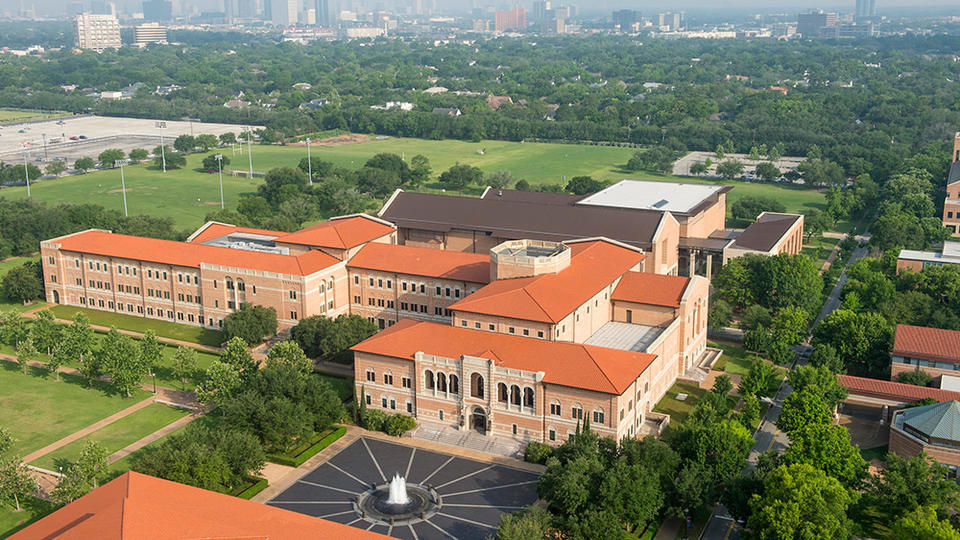

An expert in leadership and organizational change is available to speak on Twitter employees’ exodus.
“Leadership starts with a vision that inspires employees and sets expectations,” said Scott Sonenshein, organizational behavior area coordinator and the Henry Gardiner Symonds Professor of Management at Rice Business and a New York Times bestselling author. “Employees need to feel valued, secure and open to express their ideas, and not handed an ultimatum to work hardcore for an unknown vision.”
Prior to joining Rice Business in 2007, Sonenshein taught at the Ross School of Business at the University of Michigan, where he also received his Ph.D. in management and organizations. He also received a B.A. from the University of Virginia in business ethics and an master of philosophy from the University of Cambridge in management studies.
To schedule an interview with Sonenshein or for more information, contact Avery Franklin, media relations specialist at Rice, at averyrf@rice.edu or 713-348-6327.
You May Also Like
Why fixing methane leaks from the oil and gas industry can be a climate game-changer – one that pays for itself
What’s the cheapest, quickest way to reduce climate change without roiling the economy? In the United States, it may be by reducing methane emissions from the oil and gas industry.

Natural gas-focused methane pact expands at climate summit, minus China
Nearly all emissions can be stopped with new components or regulations that prohibit routine flaring, says Jim Krane, fellow for energy studies at the Baker Institute for Public Policy and a lecturer at Rice Business

Transforming Tragedy Into Something Remarkable feat. Jackie Pham ’21
Season 3, Episode 4
Jackie dives deep with host Maya Pomroy ‘21 talking about her career path, carrying on the memory of her three children Colette, Edison and Olivia, and transforming the lowest points of her story into hope and action through the CEO Foundation, which supports initiatives that closely align with her core values of education, arts, health, wellness, and environmental and social impact for the children of Sugar Land, TX and beyond.
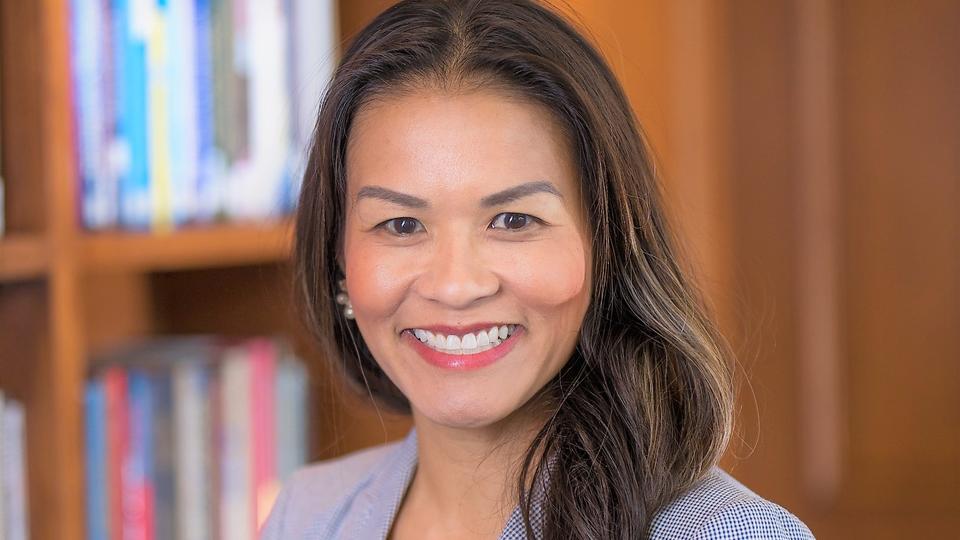
Owl Have You Know
Season 3, Episode 4
Jackie dives deep with host Maya Pomroy ‘21 talking about her career path, carrying on the memory of her three children Colette, Edison and Olivia, and transforming the lowest points of her story into hope and action through the CEO Foundation, which supports initiatives that closely align with her core values of education, arts, health, wellness, and environmental and social impact for the children of Sugar Land, TX and beyond.
Subscribe to Owl Have You Know on Apple Podcasts, Spotify, Youtube or wherever you find your favorite podcasts.
Episode Transcript
-
[00:00] Intro: Welcome to Owl Have You Know, a podcast from Rice Business. This episode is part of our Pivot Series, where guests share stories of transformation in their lives and careers.
[00:12] Jackie: Honestly, I went to Rice to figure out what I wanted to do when I grow up.
[00:19] Maya: Another daughter, immigrant, entrepreneur, Rice graduate, and survivor, Jackie Pham shares her story of loss, grief, resilience, and her new purpose of dedicating her life to future generations. She talks to us about redirecting her tremendous heartbreak and to creating a new nonprofit, the CEO Foundation, focusing on inspiring the next generation of leaders and the memory of her three beautiful children.
Today on Owl Have You Know, we welcome Jackie Pham, founder of the CEO Foundation, CFO of IMPERATIVE, and an executive MBA of 2021. Thank you so much for being here with us today, Jackie.
[01:06] Jackie: Thank you, Maya. I'm really happy to be here.
[01:10] Maya: So, I will start off by saying that I think most people in the Rice community and in the Houston community and Texas and beyond know a part of your story. You have had an incredibly difficult year and a half since the heartbreaking loss of your three children and your mom. And we will get to that part of the story, but what I would like to start with are the other parts of your story that many don't know about you, that have also shaped and continue to shape who you are.
So, you have an incredible, actually, childhood. You are the daughter of Vietnamese immigrants who fled Vietnam in 1979. And you were born in a refugee camp in Malaysia. And your parents were rescued and found adrift in the South China Sea. How do you feel that that has really shaped you, both personally and professionally?
[02:12] Jackie: 'til this day, I'm still just amazed by the strength and the grit that my parents and others like them, you know, had when it came to overcoming adversity and, honestly, just having a sense of conviction. You know, I don't know how many of us today would leave everything we have, get in a boat—with no GPS, by the way—you know, and hope that you'll end up in some country where you know you don't... won't speak the language and make a new life for yourself, right? And it took a strong sense of conviction for them to make the decision to do that. But then, you know, it was just their strength and grit that moved them forward beyond that, right, and helped them, essentially, build a life for, not only themselves, but for their family here in the United States. So, I think—
[03:12] Maya: And that strength and grit has been instilled in you as well.
[03:16] Jackie: Yeah, I would, I would like to think so. I think I just kind of grew up feeling like, I mean, you just had to try hard at everything you did, right, and work really hard. And eventually, like, you'll achieve what you kind of set out to do, you know. And it's not always easy, but as long as you kind of just keep moving forward and keep powering through, there's not much you can't do. And it's really hard when your, you know, your parents and you're growing up. Behind all of that, you really feel silly about certain things and giving up on anything, you know.
[03:52] Maya: Yes. And your father, basically, the entrepreneurship spirit that you have came from him. He passed it along to you, probably genetically, because he was an entrepreneur. And when he came to this country, he started his own businesses.
[04:08] Jackie: Yeah, absolutely. I think, you know, if you've asked my dad, he would have never wanted his kids to pursue anything entrepreneurial because it was hard work, right, and it involved a lot of risks. And he never really talked about why he took those risks and why he made kind of like the professional decisions for himself that he did. But honestly, he just wanted his kids to go to college and go work for a company and get a paycheck and have a pension, right? I think he... if he knew, you know, I was ever pursuing anything entrepreneurial, the father in him would just feel a lot of angst about, you know, the risk of failure there.
[04:49] Maya: Absolutely, but also, the risk of reward.
[04:53] Jackie: Yeah, absolutely.
[04:54] Maya: That's... And after graduating, you went to Reliant and you were an IT analyst. And then you spent a few years at EY as a senior consultant, advisory and assurance services. And then, KPMG. And was it when you were at KPMG and then Cardtronics as well and you actually worked your way up to being the vice president and head of United States finance? And was it when you were there that you decided to pursue an MBA? What sparked that idea for you?
[05:23] Jackie: I always wanted to get an MBA to check the box. The timing was never right, right? And so, I just kept putting it off and putting it off. And moving up as fast as I did at Cardtronics, you know, required a ton of hours, right, and required a pretty big commitment. And so, there just wasn't room for an MBA. And I felt like, every year, I was kind of making excuses for myself. And having kids, honestly, really changes one's perspective and forces you to kind of dig deep. And at one point, I realized, you know, I was kind of at a loss for words when it came to telling my kids what I did for a living. The concept of payments and financial services is just way too abstract and really lame to kids. And I, and I envied, honestly, the parents who could easily convey the value of their contribution as like police officers or teachers or even like so-and-so's mom who's a director at Target, right? And then there was a classmate's dad who works at Google. Like, these were things like kids just know of, you know, and could relate to.
That realization kind of forced me to re-evaluate and think about the MBA differently than how I thought about it in the past, in terms of checking the box. And so, when I was thinking about doing the MBA at that time, it was really to kind of pursue something different in my career and just to get more out of what I was going to do professionally for the rest of my life. And so, honestly, I went to Rice to figure out what I wanted to do when I grow up.
[07:07] Maya: And a catalyst for your kids.
[07:08] Jackie: Yeah, definitely.
[07:10] Maya: So, you have three—Colette, Edison, and Olivia. Could you tell me about them?
[07:17] Jackie: Yeah. So, I'll start with Olivia. She's my oldest. Olivia was just, I don't know, like, beyond her years. And it was really interesting, the last couple of years kind of seeing her really grow into herself and kind of figuring out how to navigate her social circles. And, you know, you could tell like life was becoming more complex to her than it had been when it was just, you know, the Disney Channel and like Legos, right? And so, I think she was very, very introspective. I think there was just a great level of depth there, in terms of like personality. She's incredibly witty. And with wit comes, you know, a lot of sarcasm at times. And she was never shy about sort of using that sword, if you will. And she was just a really good big sister to her younger siblings, just always very caring of them, even when I knew it was hard on her. Like, it was always very hard on her to go from being an only child to then having a younger brother and a younger sister.
And I think, you know, when I saw that, that sort of stemmed my desire to kind of really foster her and I as like one-on-one relationship. So, we... you know, when she was seven, we started taking one-on-one mother-daughter ski trips. And that was a time when, you know, we would really connect and talk. And she would have my undivided attention. And she loved skiing. And I took up skiing because, you know, she was learning. So, I was going to learn.
Olivia is very like risk averse. Like, she just wants to like take all the green routes, the longest ones, and just enjoy the scenery of the mountain, right? We're very different in that way. I'm like I want to go fast. I want to like, you know, go through the trees a little bit. And she was just, like, no. So, we're just two different types of skiers.
[09:41] Maya: And so... and then you had Edison.
[09:43] Jackie: Yeah.
[09:44] Maya: What's the age difference between Olivia and Edison?
[09:46] Jackie: The age difference there is three and a half years. So, Edison really just gentle, kind kid, very considerate of others. You know, he loved art a lot. I hate to kind of put things in boxes, but he wasn't really your typical boy, you know. He wasn't super rough and wasn't in cars and things like that. He loved like art and architecture and just like, you know, was very visually stimulated. He liked being creative and was... felt a sense of pride in a lot of the stuff that he did. Yeah, just a really, like, gentle, kind kid.
And then, you know, Colette, my youngest, she was just like a ball of energy. And she lit up a... she lights up the room. I mean, people were just incredibly attracted to her. And she just... she was very extroverted and outgoing. And although she was the youngest, she wasn't going to let anyone push her around. And she was sweet and loving. She would say that she loves love. And mine and Colette's relationship was very different than me and Olivia's because Colette was like my last. So, I was kind of like holding onto her being like the baby.
[11:30] Maya: The baby, yeah.
[11:32] Jackie: And she... Yeah. And she loved that, right. Like, she let me have that. She used to write me little love notes, like pretty much every day, and leave them on my desk or throw them over the balcony or leave them like on my nightstand.
[11:51] Maya: And you decided to pursue this executive MBA as a single mom of three children. And that is... I think that that is a Herculean effort. Not only were you a single mom with three children, but you also had a job in order to support yourself and your children. And on top of that, you decided to pursue this executive MBA in 2019 before COVID, right?
[12:23] Jackie: Mm-hmm.
[12:24] Maya: So, you were part of that COVID cohort, as I was. I came a year later. But we both went through that and all of the challenges and adversity of dealing with a global pandemic, working on an executive MBA, working remotely full-time, teaching children, right, because school was at home.
And in February of 2021, there was this freeze that happened in February. You know, there was, there was no power. And there was a tragic fire. And that's how you lost all three of your children and your mom. That is something that... it's immeasurable and deep pain. And you have continued to go on each and every day. And I just want to know how you do that. I guess that my question is, how do you find the strength and the resilience and, you know, just the power to move forward after something like that?
[13:52] Jackie: I... my... I don't... the truth is like I don't feel strong at all. Every day feels like a task. And I don't get out of bed every day. And it is what it is, and I have to be okay with that. I think, mentally, I kind of approached life, if you will, a little differently. You know, I really just set out to get through the day every day. And I kind of focus on, hey, these are things I need to do today. And if I can get these things done, then I'll get through that day, you know.
There's the spiritual side of me. You know, there's no other way for me to explain like how I do that, other than that I know that there are a lot of people praying for me and putting good intentions out in the universe for me. And that's the only way I can kind of explain, you know, my ability to get up, you know, and my ability to kind of move forward. I think a lot of it has... I've taken a lot of time to kind of reflect on grief and loss and all those things aside, like, what does my life look like now?
And I think one thing I've realized is that, just because my kids are no longer here, that doesn't mean I'm no longer a mother to them. And I kind of just refuse to let that identity go, if you will. And the foundation, honestly, is one way that I can still be Olivia, Edison, and Colette's mom, and honor their memory and just, you know, carry on, on their behalf.
I also just refuse to allow like the tragedy to be like the end of their story and what they're remembered by. And so, every day that I can, I'm going to try to like do something good on their behalf, so that like their impact will live on.
[16:45] Maya: So, let's talk about that. Let's talk about how you took tragedy and are transforming it into something remarkable and something that will make your three beautiful children live on. The Rice community really rallied behind you. And I know that you lost everything, including all of your clothes, in that fire. And you mentioned before that the clothes on your back are literally Rice Business clothes that people had given to you. And with the funds raised in honor of Colette, Olivia, and Edison, it was more than half a million dollars. And you're taking those funds and creating a foundation called the CEO Foundation, which is in honor of the initials of their first names—Colette, Edison, and Olivia. And you want to move forward and support initiatives that closely align with your core values of education, arts, health, wellness, environment, and societal impact. So, tell me about the CEO Foundation—how, when you started it, where it is right now, and where you hope it will go in the future.
[18:17] Jackie: We just kind of... we've started it this year. And it's very, very early stages. First of all, I just want to say that I am incredibly grateful to the Rice community and the Houston community and kind of just, honestly, like everyone from across the globe that reached out in one way or another to support me. As you said, like, yeah, as if, you know, losing my kids and my mom wasn't enough, like I was essentially homeless, with no will to do anything. And so, people put clothes on my back and fed me and drove me and even helped me with the logistics of planning all kind of, like, the final arrangements for my kids, and during a time where I felt like, honestly, a zombie.
And so, again, like just so grateful to the Rice community and everybody. And I think the one underlying sort of bright side during kind of all of that was just sort of seeing the spirit of humanity rise above, you know, during such a stressful time, you know, everywhere around the globe, right? Like... but for a minute, we all stopped thinking about our differences and stopped complaining about COVID and just sort of rose above to help a neighbor. And I'm so grateful for that.
In terms of the foundation, you know, I spent some time... a lot of time, actually, just talking to people about, you know, what to do with this money. And I think I had it in my mind that I knew I didn't want to like reinvent the wheel, so to speak, you know, the question of, well, does the world need another, you know, nonprofit organization? You know, nonprofits like have their challenges, and success rates there aren't high. Is this an endeavor I should really do? Is it really... am I really being like responsible with those funds? And I kind of just wanted to do right by everyone's kindness.
But eventually, I think I realized... or it came to the realization that why not continue to double down on things like education, right? And why not promote positive environmental and social impact, especially among kids? Certainly, in my upbringing, you know, I didn't learn enough about that kind of stuff. And so, I think the more we're able to expose kids to some of these things at a younger age, it'll help sort of shape them as tomorrow's, you know, leaders, innovators, and change-makers. And so, that was kind of how the initial idea of the foundation spawned.
And we don't have a ton of things we plan to do on a direct basis. I think what I've been doing is spending a lot of time talking to nonprofits that need more resources. And they are in the fields that they should be in and, you know, doing all the right things for their causes and just simply need help, right. And so, if I... if the CEO Foundation can do anything to help on that front to either promote or bring more awareness to their cause, provide more resources, you know, that ultimately is a net positive impact, right?
So, yeah, it's just been a year of really doing a lot of research and kind of figuring out how we wanted to structure the foundation. But we do kind of have some soft plans underway for the coming... the next couple of years. And so, I look forward to sharing more on that in the coming months. We've kicked off one pilot project that we're doing with the St. Laurence Catholic School in Sugar Land. And that's the school where my kids went to school. They have a really old library. And I have this idea that I got so much value in going to the library when I was a kid. And it wasn't just to get a book and read a book, but it was the space and just having a place to go to. And I think, with the things like... things kids have today is nothing like it was when we were kids, right? But it doesn't mean some of the things that we had when we were kids can't be valuable today. And I think the library is one of those. And so, the project at St. Laurence is about kind of modernizing the library, getting kids back into a library, creating collaborative spaces for them to do group projects or just to simply do homework together and to be away from screens, you know, or just a quiet place to read. I think like spaces can do a lot for people in terms of just like engendering more thought-provoking types of activities.
And so, the idea is to update the library, modernize it. And then, hopefully, we'll kind of monitor that and see... go through an observation period and kind of see like if some of these theories I have are teasing out. But, you know, in five to 10 years, I would... if it's successful, like, I would love to be able to renovate libraries for other schools and provide grants to do that, right, so that they don't have to draw from the local municipal resources and whatnot. And if at the end of the day, like a kid... an idea is spawn in a CEO Library and a kid comes out and does something with that and changes the world, that will be the measure of our mission.
[24:33] Maya: So, will it be called the CEO Library?
[24:34] Jackie: Yes, it will be called the CEO Win Library.
[24:37] Maya: That's awesome. I love everything about that.
[24:40] Jackie: Thank you.
[24:41] Maya: And so, part of coming through this executive MBA program or any MBA program, you go in thinking that it's going to be one way, right? And then it's completely different. And in the midst of all that, you've also pivoted. You know, you had goals of where you wanted your career to go. So, can you talk to me a bit about, you know, people that are going through the program or considering an MBA and your experience at Rice and going through that and having to pivot, the lessons that you have learned.
[25:23] Jackie: Yeah. I think it's important to just have a reality check with your, with yourself and with your families and your support system and your teammates. I think, you know, yeah, as you said before, like, outwardly looking in, like I look at myself and I think that I was crazy, you know. Like, as you said, like single mom, three kids, you know, full-time job, like, oh, sure, like what made me think I could do that? But I think it was... And it was the advice of other graduates, right, was just like prepare your support systems and get their buy-in.
And so, I think the MBA experience was as much mine as it was my kids, because I needed them to be flexible about certain things when it came to every other weekend when I had to be in class. And they were genuinely excited for me. And that kind of fueled me as well, right, like I just didn't want to let them down. And I just... you know, I also just wanted to show them that, like, you can do anything, as long as you try and you work hard, right? And I didn't want to be beholden to my circumstances.
My mom was incredibly supportive. I think grandmothers or grandparents are like unsung heroes because I wouldn't have been able to do it without her helping me with after school carpool, right, and helping me with simple things like grocery shopping. It's simple, but it takes time. And it's absolutely necessary because you have to feed everybody. But her just taking on these little tasks for me helped. And then having conversations with my own team, and honestly, being vulnerable. I don't know what kind of like the composition of your team was. But for me, I was the only female on my team.
[27:18] Maya: Me, too. Me, too.
[27:19] Jackie: Yeah. And I felt like I was really daunting. But I knew I had to do it, just to have this initial conversation with like, hey, guys, like these are my circumstances. I'm going to need flexibility from you. And my promise to my kids was I'm as busy as I ever am. I will always, always be home for dinner. And I... and that was important. And so, it was like we needed to schedule our group calls for after dinner, things like that. But I think the guys on my team are like my brothers for life because they were just really good men and really good teammates to have. And we all pulled for each other and carried the extra weight when we could. And they certainly did that for me in the end. But yeah, to your point, I think that, yeah, the advice I would have for future students or people about to just pursue this is just get that buy-in from all your support systems and just get ready to take the plunge.
[28:24] Maya: Well, and that's also something that I think is important to highlight about Rice and the MBA program, is that, yes, you come to build a network, you come to meet new people, to share ideas, to be challenged, all of these things that check all of those boxes. But I think that the best part, really, is that you build these lasting bonds and friendships for the rest of your life. And you go through highs and lows and difficult challenges and all of these things in these two years that you have together. And it's like nothing else. And, you know, what I have noticed and you probably have as well is that this program, it permeates every part of you. And, you know, you drive down the road and you just don't see the world the same way after being a part of it. And it's really incredible.
[29:25] Jackie: Yeah. I mean, you're absolutely right. And I think, you know, a lot of times, people say like, oh, the Rice network... and like network just feels like it doesn't do it justice, right?
[29:40] Maya: It feels cold.
[29:41] Jackie: I think the spirit of community behind Rice is like no other. And I've never been much of like a school spirit kind of person. But, like I'm really, really proud of being an owl. And I get really excited when I talk to anybody, like, who went to Rice or considering on going to Rice. And as you said, it's a life-changing experience that you don't anticipate at this stage in life, either. I mean the last time I honestly really made friends was probably like in my very early 20s, right. But to make 60 new friends, real friends, not my network expanded by 60, right, like to make 60 new real friends in your early 40s is incredible.
[30:31] Maya: Well, I also want to talk about the new day job that you have taken on as the CFO of a new organization. So, tell me about that. That's super exciting. I mean, you're running a brand-new nonprofit, and then you're starting something new as well. I mean, man, you're a real underachiever, Jackie, I have to say.
[30:54] Jackie: Yeah. So, I'm the CFO of a company called IMPERATIVE. And IMPERATIVE is a relatively new startup as well. They started this past February, a group of really established professionals and experts in the voluntary carbon market space. Essentially, they're a multi-jurisdictional carbon offset project development company. It's a global company. And again, we're staying in the impact space. You know, I think there's a lot of fulfillment for me, professionally, being able to just stand behind what the company I work for does. And they're part of this bigger, greater mission to use the earth's resources more responsibly.
[31:42] Maya: So, there's a lot. There's a lot for you to look forward to, which is super exciting, you know, that... now that we can put some things behind us with the changing landscape of, you know, with COVID and everything else. It's great to see things not as hazy, I guess. Things were a bit hazy, I feel like. I don't know if you felt the same way. But, you know, the last couple of years have been a bit tumultuous. And now, it seems that things are clearing up, so to speak.
[32:12] Jackie: Yeah. I think that's a good way of putting it. I think there's a couple more paths, I guess, in front of me now, right. And so, it's just a matter of pursuing them and seeing where it all takes me.
[32:25] Maya: I'm so excited to have had an opportunity to talk to you today.
[32:29] Jackie: Thank you for the opportunity to talk about what I'm... you know, what I'm doing and to talk about my kids, you know. I think people ask, you know, "how you're doing" all the time. And for me, any day I get to say... I have the chance to say my kids' names out loud and to talk about who they are or share things about them beyond, you know, the tragedy that took place is a good day for me. So, thank you, Maya, for giving me that opportunity. And for the listeners, if you haven't already, visit us at ceofoundation.org. Follow us on Instagram. The handle is @ceoforgood. We've got a lot of big things in store. And I can't wait to start rolling a lot of that out and showing the world the spirit of Colette, Edison, and Olivia.
[33:31] Maya: And I can't wait, too, because it's going to be, it's going to be amazing, just like you are and just like your beautiful children are. And you will always be a mom to them. When you're a mom, you're a mom for life.
[33:42] Jackie: Yeah, thank you.
[33:43] Maya: Absolutely. Thank you for being here today.
[33:48] Outro: Thank you for listening. This has been Owl Have You Know, a production of Rice Business. We'd like to continue our support for Jackie and pay tribute to her beautiful children—Colette, Edison, and Olivia. If you would like to join us, please visit ceofoundation.org and follow the foundation on social media to keep up-to-date on Jackie's important work. You can find links to the foundation's Facebook, Instagram, and LinkedIn accounts in our show notes.
You May Also Like
Houston universities maintain top spots on best entrepreneurship program rankings
Houston entrepreneurs, take note. Rice University and the University of Houston again are at the top of their class among the country’s best entrepreneurship programs.
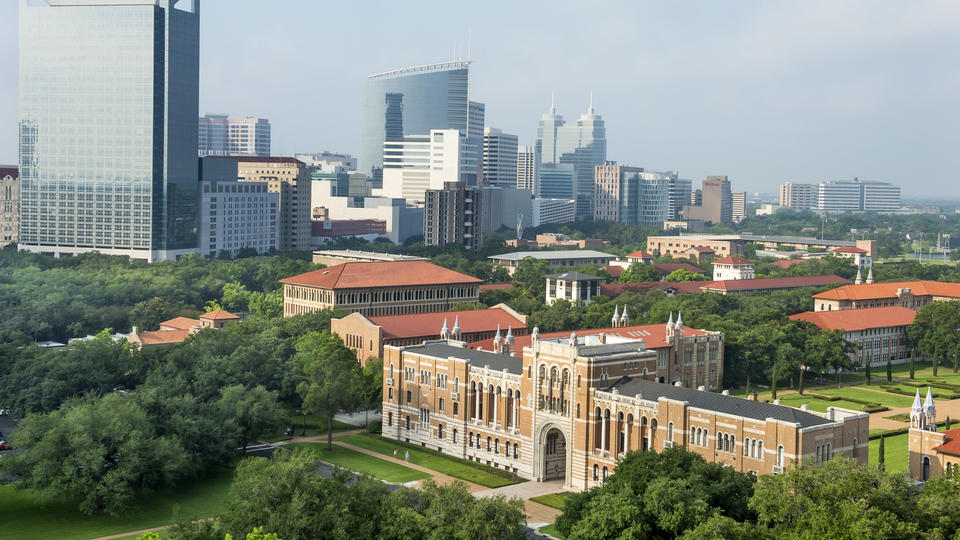
Rice Business No. 1 for entrepreneurship, No. 5 for online MBA
Rice Business received top billing on two prominent lists rating academic excellence that were announced today: Princeton Review and Entrepreneur magazine’s entrepreneurship ranking (No. 1) and Poets and Quants’ online MBA ranking (No. 5).
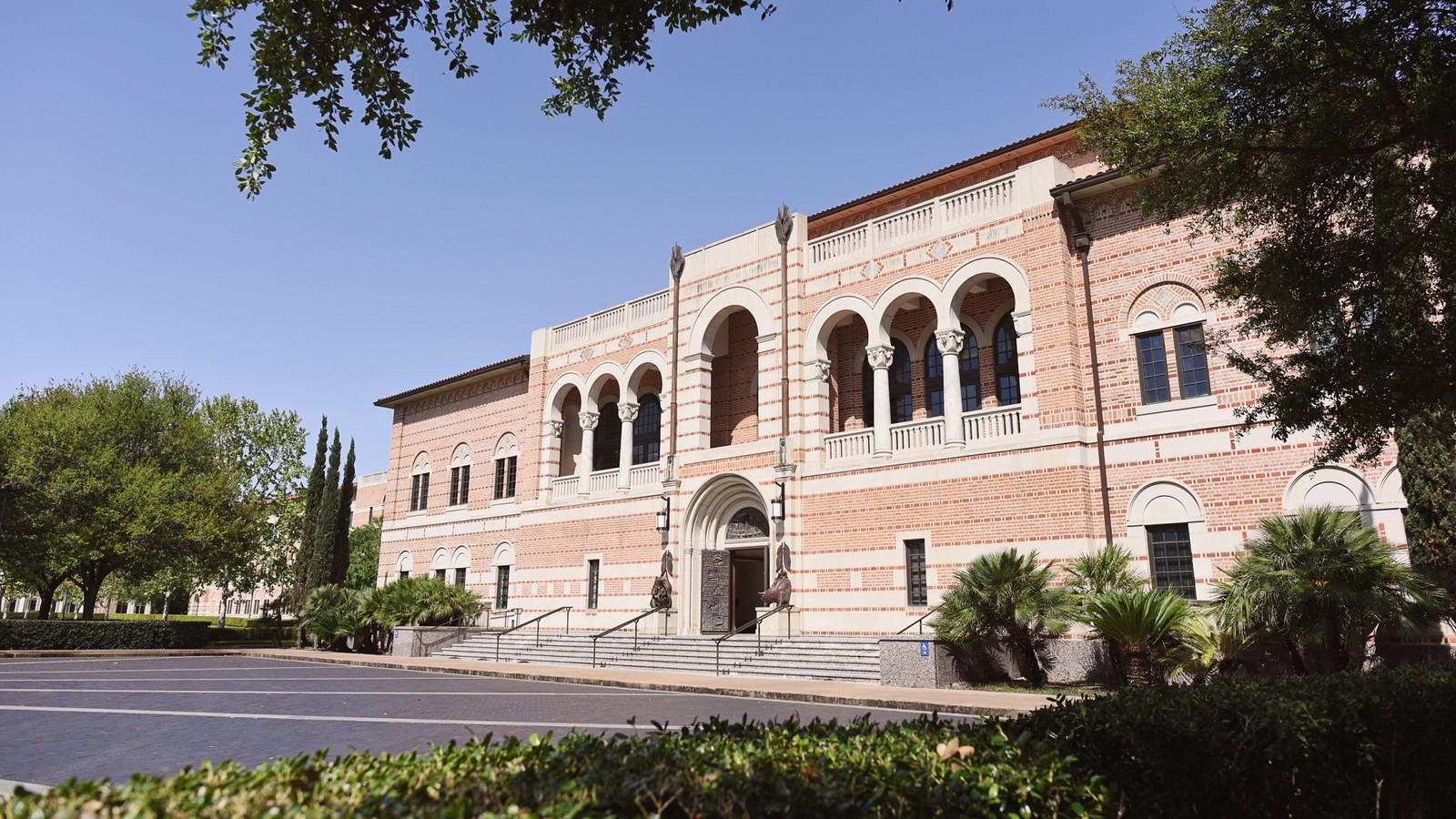
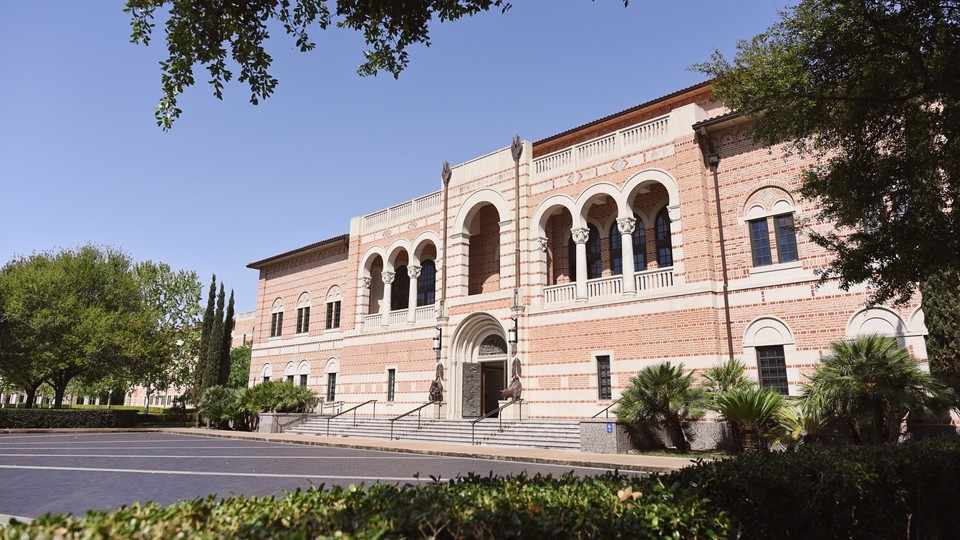
Rice Business received top billing on two prominent lists rating academic excellence that were announced today: Princeton Review and Entrepreneur magazine’s entrepreneurship ranking (No. 1) and Poets and Quants’ online MBA ranking (No. 5).
For the fourth year in a row, the school is ranked the No. 1 graduate entrepreneurship program in the United States for 2023 by the Princeton Review and Entrepreneur magazine. It’s the seventh year in the top three and the 14th year in which it has ranked in the top 10 on this prestigious list.
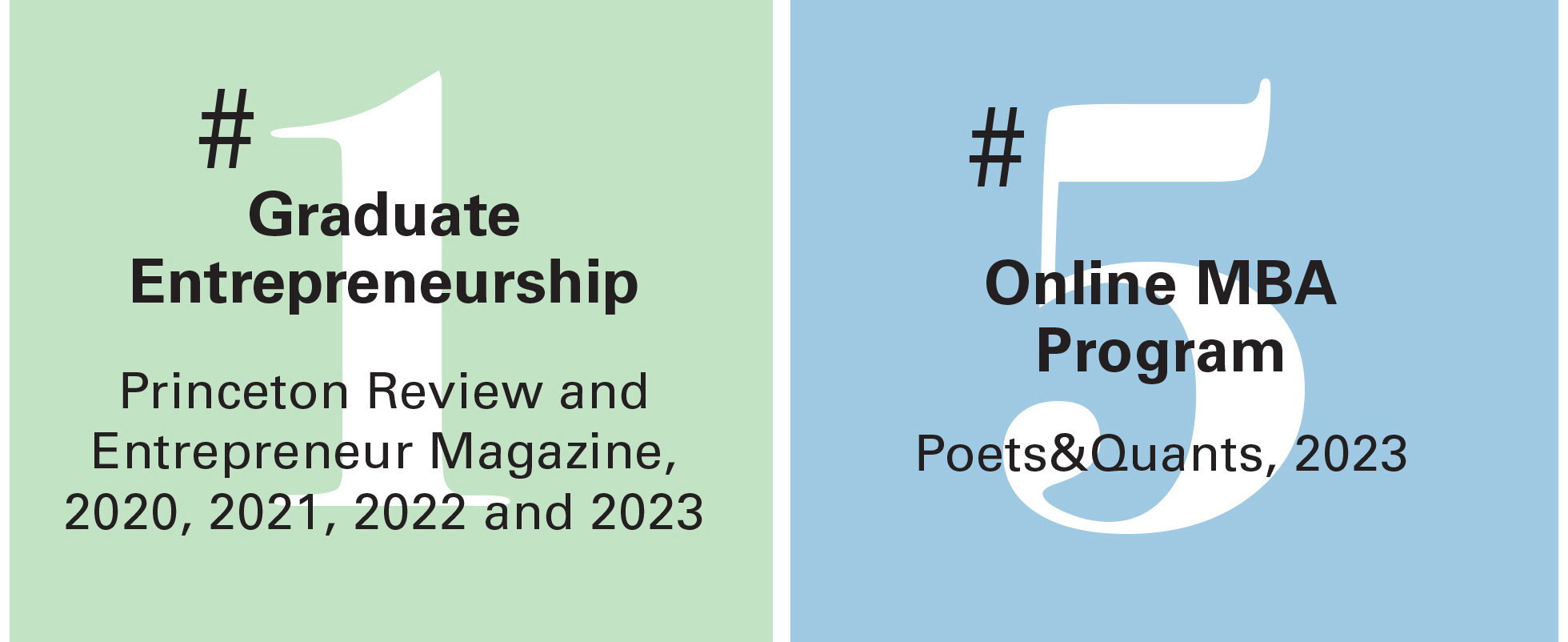
Poets and Quants ranked Rice Business No. 5 in its online MBA rankings, up from No. 7 on last year’s list. Like all courses at the school, the online MBA boasts dedicated, nationally recognized faculty who derive insights from their own peer-reviewed research to help students understand topics in accounting, finance, marketing, organizational behavior and strategy in the context of today’s business landscape.
“We are so proud to be a part of the creation of new businesses and industries critical to future prosperity in Houston and Texas,” said Rice Business Dean Peter Rodriguez. “Both our on-campus and online MBA recognition show how our faculty and staff strive to prepare Rice Business students for real-world applications and successful careers in ever-changing business dynamics.”
The Rice entrepreneurship ecosystem is robust, featuring a comprehensive suite of resources and support system for entrepreneurs, future investors and entrepreneurial minded students, faculty and alumni. The Liu Idea Lab for Innovation and Entrepreneurship (Lilie) provides courses and co-curricular entrepreneurship programs, while the Rice Alliance for Technology and Entrepreneurship (Rice Alliance) provides opportunities for community and global startups to experience the Rice ecosystem.
“Appearing in the number one spot for the fourth year running cements reputationally what our students know innately, that Rice’s comprehensive suite of programming and education provides true practical value for founders and innovators,” said Yael Hochberg, the head of Rice’s Entrepreneurship Initiative.
Lilie’s suite of experiential programs, action-learning courses, equity-free funding and mentorship are available to all Rice student entrepreneurs as they develop their ventures, which are then accelerated through Lilie’s immersive programs like Launchpad and the Summer Venture Studio accelerator. Rice Alliance provides opportunities for aspiring entrepreneurs to launch their businesses, hone their pitching capabilities and build their mentor and investor networks through educational programs, accelerators, the Rice Business Plan Competition and venture capital conferences.
“Rice Business is one of less than a handful of business schools that can claim 14 years in a row among the top 10 and four years in a row as No. 1,” said Brad Burke, managing director of Rice Alliance for Technology and Entrepreneurship. “Our rise in prominence mirrors the growth of our world-leading Rice Business Plan Competition, now in its 22nd year, which offered $2 million in prizes in 2022.”
You May Also Like
Rice, University of Houston top Princeton Review lists for entrepreneurial programs again
Two Houston universities are celebrating top spots on the 17th annual Top Schools for Entrepreneurship Studies lists released by The Princeton Review and Entrepreneur magazine.
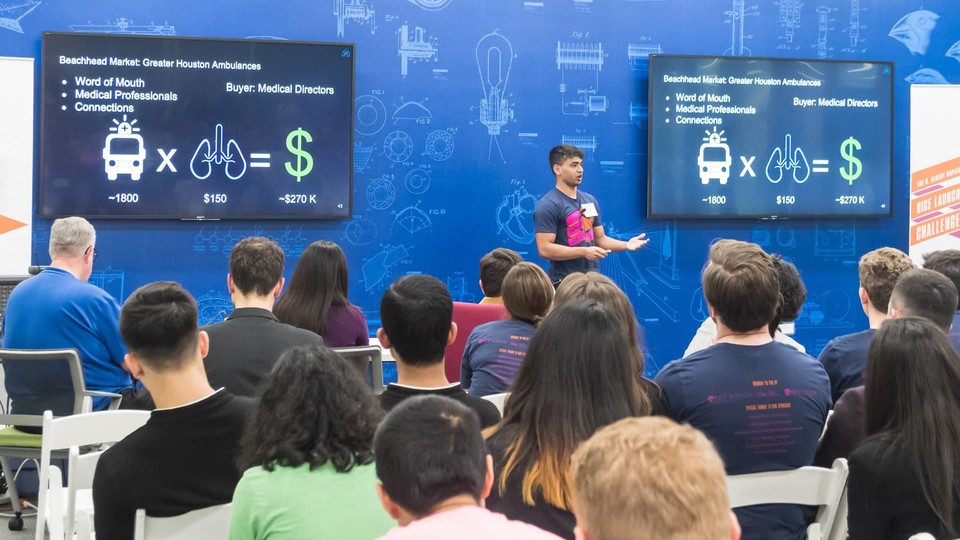
Decision Making in Energy Operations
A Review of the Operations Literature on How Decisions Could be Made in the Energy Industry


Based on research by Professor Nicola Secomandi
A Review of the Operations Literature on How Decisions Could be Made in the Energy Industry
- Research into energy operations looks at different methods for making the best decisions at each stage of energy value chains.
- While crude oil and natural gas have had a head start in the operations literature, the amount of research into electricity and clean energy is catching up.
- Future research may benefit from both analyzing and improving current decision making processes.
Real options represent the decisions companies can make in the face of evolving risk. In the energy and commodity industries, real options are ubiquitous, including the extraction, processing and refinement, storage, and transportation of natural resources. These choices are influenced by ever-changing market and environmental conditions.
Because of these uncertainties, the energy industry has been a key focus of the operations literature on real options. Rice Business professor Nicola Secomandi, along with University of Illinois at Chicago College of Business Administration professor Selvaprabu Nadajarah, were recently invited by the European Journal of Operational Research to conduct a review of the operations literature on real options in energy. Their review included 80 papers across 10 journals active in the field. The research was mostly conducted during Secomandi’s time at the Tepper School of Business at Carnegie Mellon University.
The review examined how often different types of energy and methods of studying related business processes appeared in the operations literature. Nearly a quarter of the papers considered natural gas, more often than any other energy type. Natural gas storage was the most studied process, while the transport and sale of natural gas were less discussed.
While only 10 percent of the papers focused on electricity by itself, mostly in the context of battery management, electricity was discussed alongside emissions and the environment in 22.5 percent of the papers—almost as often as natural gas. About 11 percent of the papers examined both electricity and natural gas.
Roughly 21 percent of the papers focused on crude oil and refined products. Exploration, development, and abandonment of crude oil fields were common topics, while work on crude oil refining and gasoline logistics was rarer.
The review looked at the frequency of use of five categories: real option types, valuation methodologies, model formulations, price risk dynamics, and optimization schemes. Timing options, which irreversibly change the status of an asset when exercised, and switching options, which involve reversible changes, appeared with about equal frequency. Of the valuation methodologies, risk neutral valuation was employed the most often, appearing in nearly 78 percent of the papers. Model formulations were divided mainly between Markov decision processes, which assume that decisions are made at set times, and stochastic optimal control models, which assume that decisions are made continuously. About 63 percent of the papers discussed Markov decision processes, but at nearly 34 percent, stochastic optimal control models haven’t been entirely left out of the literature. Almost 75 percent of the papers formulated models based on spot prices as opposed to futures prices, and over 80 percent adopted normal distribution models, either alone or in combination with other models. Approximate solution approaches dominated within optimization schemes, appearing in 71 percent of the papers.
While several energy sources and analysis tools have been discussed in the literature, the possibilities for future research remain broad. The transition to clean energy sources may increase the complexity of already intricate operations. Its modeling and analysis may require more advanced models than existing ones.
Nicola Secomandi is the Houston Endowment Professor of Management – Operations Management at Jones Graduate School of Business at Rice University.
To learn more, please see: Nadajarah, S. and Secomandi, N. (2022). A review of the operations literature on real options in energy. European Journal of Operational Research. https://doi.org/10.1016/j.ejor.2022.09.014
This research was made possible by a National Science Foundation grant and has been published as an open access article.
Never Miss A Story
You May Also Like
Keep Exploring
‘There’s definitely an accountant shortage out there’: MBAs have become the go-to degree and companies are struggling to hire enough CPAs
Ben Lansford, accounting professor and director of the Master of Accounting program, discusses the reason accounting is a major in decline at schools across the country — and why it’s worth the time.
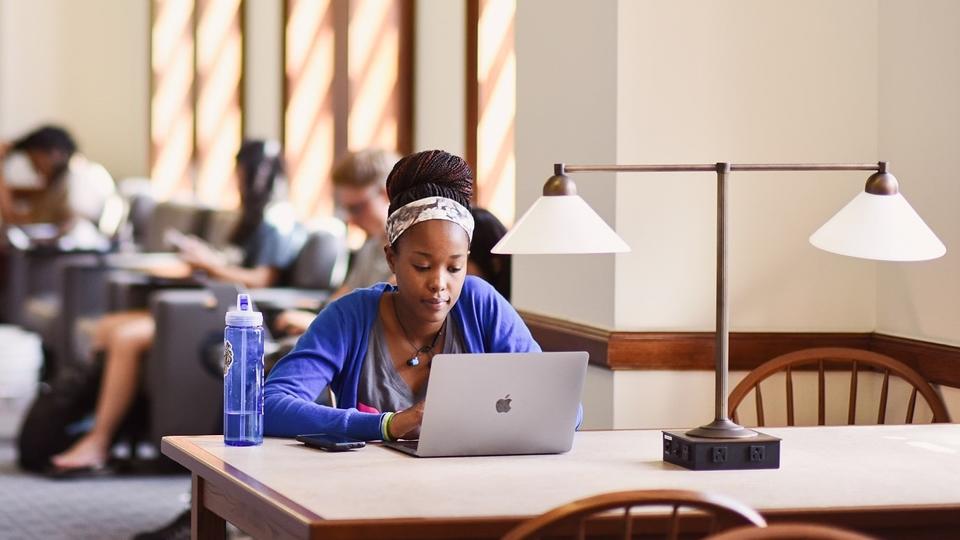
First annual Rice Business DEI report shows action toward fostering culture of respect, opportunity
Rice Business has released its first annual report on diversity, equity and inclusion (DEI). The report highlights internal efforts to become a more welcoming and accepting community, a major priority for Peter Rodriguez, dean of the Jones Graduate School of Business.
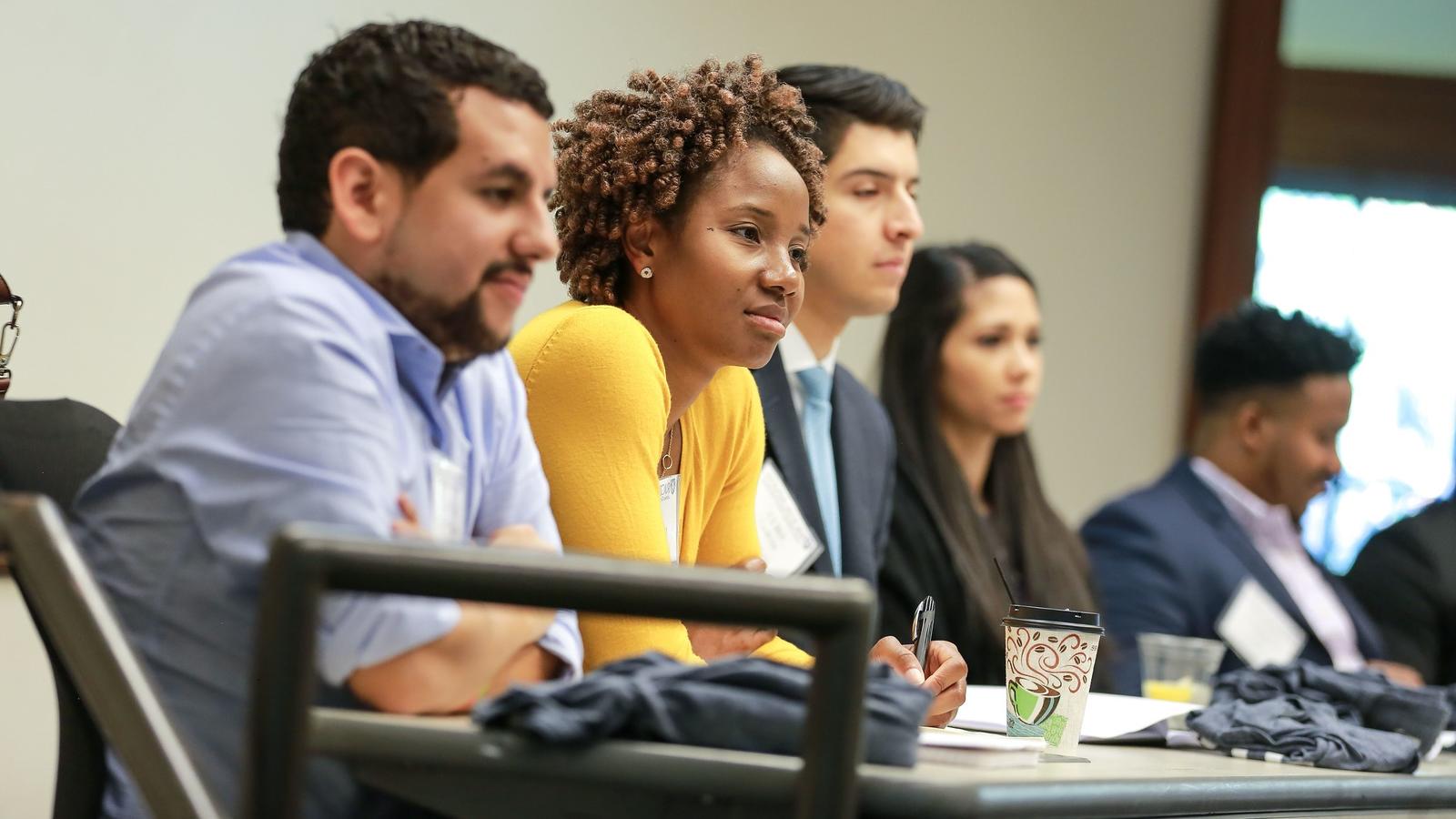
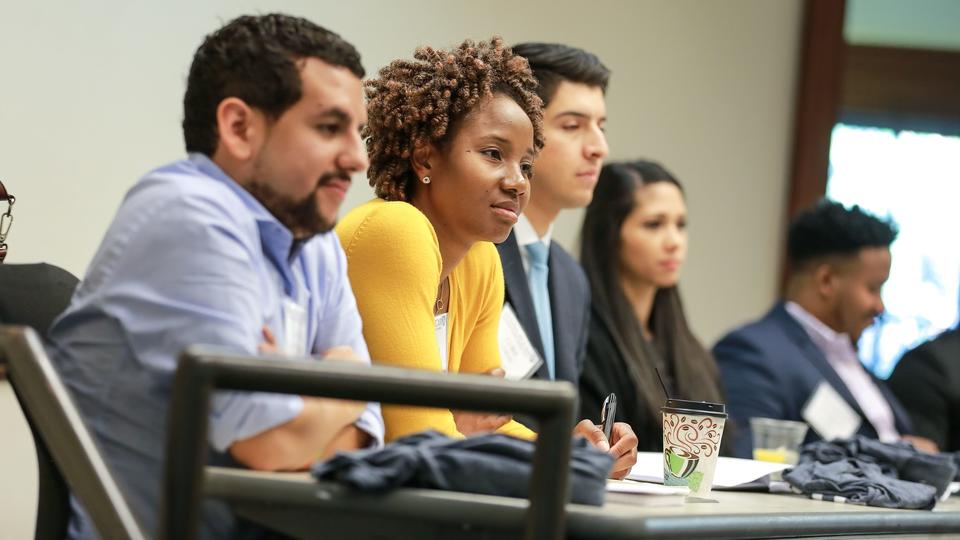
Rice Business has released its first annual report on diversity, equity and inclusion (DEI).
The report highlights internal efforts to become a more welcoming and accepting community, a major priority for Peter Rodriguez, dean of the Jones Graduate School of Business.
“People come here to work together, to study, to learn,” Rodriguez said. “And they bring with them their entire background: their history, their family’s history, their culture, their identity, their religion, their nationality — all of these things come together. We need to use everything in our power to ensure people here feel embraced and included and that we thrive as an organization. And that’s why we’re committed to DEI as a central part of our culture here at Rice Business.”
In response to the Task Force on Racial Equity and Social Justice Rodriguez established in 2020, the school’s Office of Belonging and Engagement has expanded. Its mission is to facilitate an environment where all students feel a sense of belonging and are valued and respected by offering opportunities for dialogue and learning through initiatives and programming for the Rice Business community.
DEI is embedded into every facet of how students, faculty and staff engage with one another, said Connie Porter, senior associate dean for DEI and associate clinical professor of marketing at the Jones School. The office helps enhance the student experience with recruiting and career support as well as supplementing curriculum, which elevates “cultural competency” through “everyday inclusion,” Porter explained.
“We want every member of our community to thrive,” she said.
The report highlights the DEI office’s actions in support of its mission in five strategic areas: school culture, leadership and oversight, curriculum and programs, external engagement and student, faculty and staff development.
“We want each member of our community, regardless of race, ethnicity, nationality, religious beliefs, political views, gender and any other aspects of their identities, to feel wholly accepted, included and valued,” Porter said. “Everyone has enormous talent and potential to contribute as an ally, advocate, teacher, scholar and/or leader.”
This year, more women, more Asian students, more Black students and more students who identify as LGBTQ joined Rice Business to pursue an MBA.



